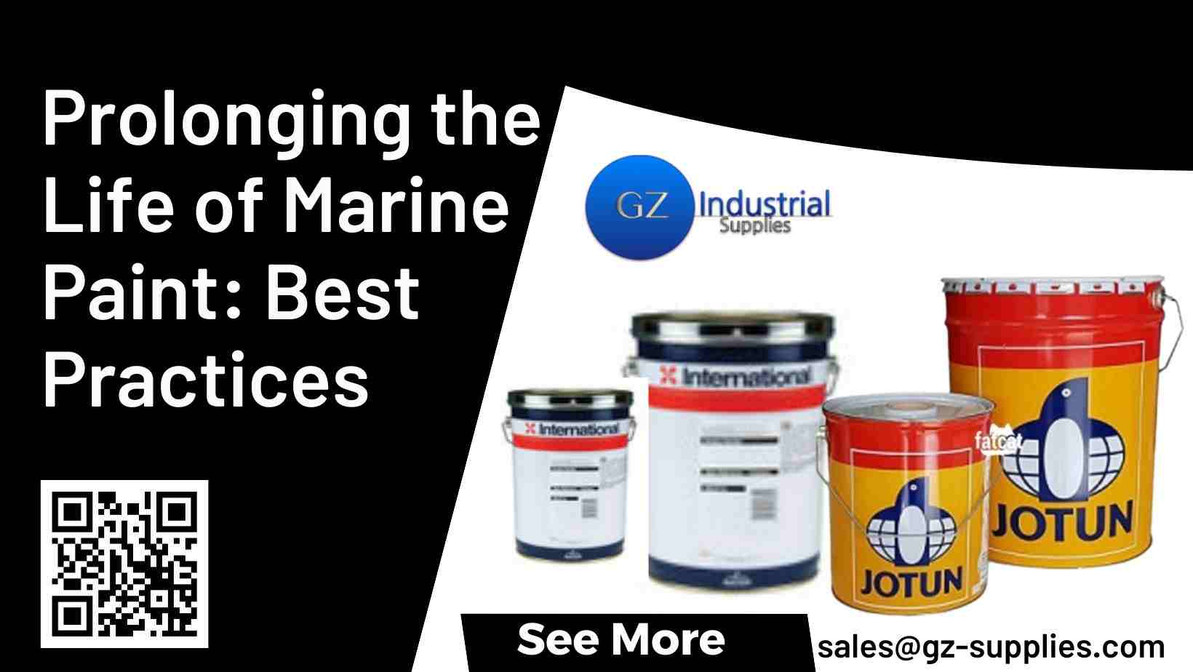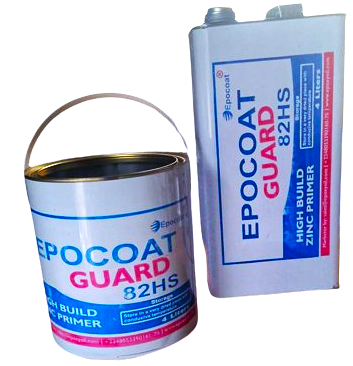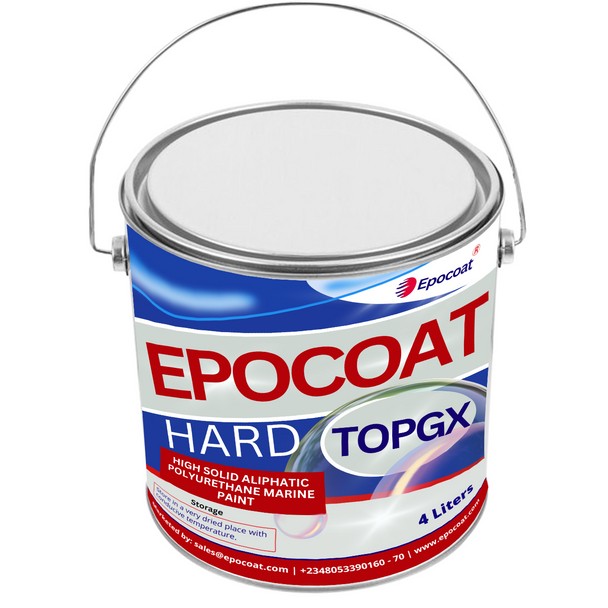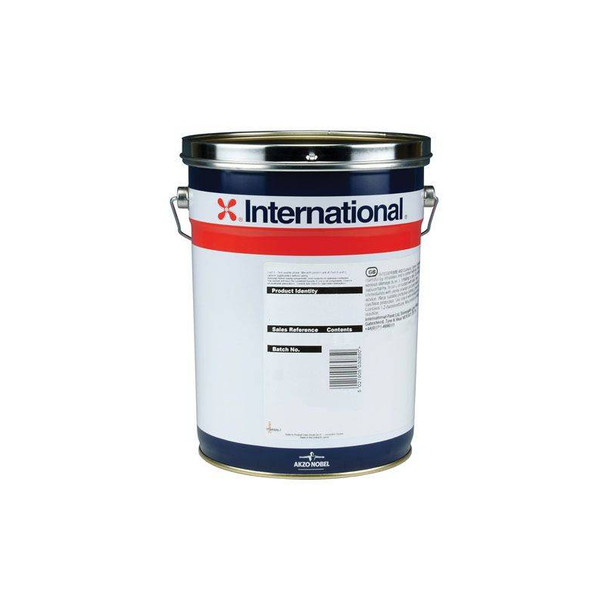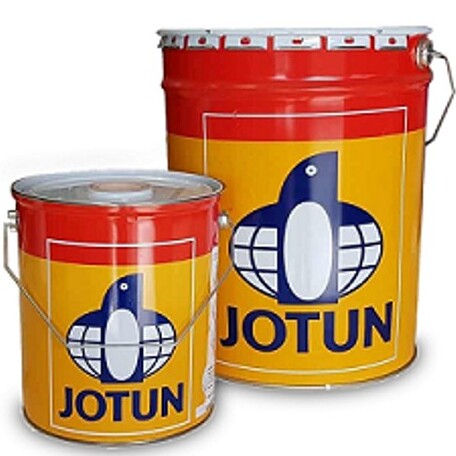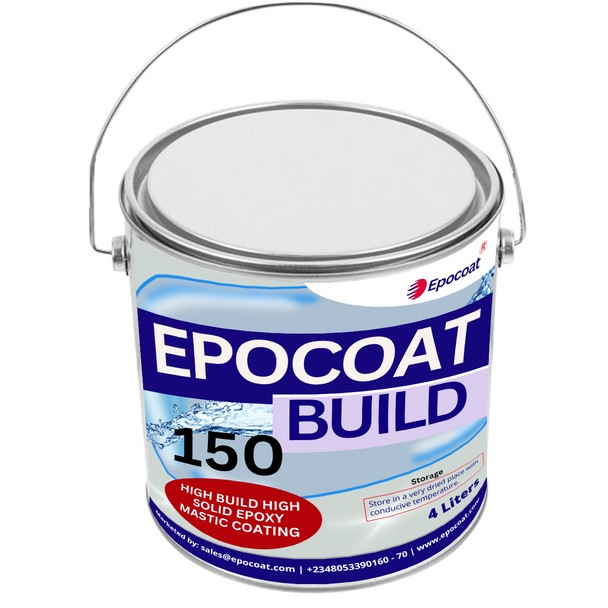Prolonging the Life of Marine Paint: Best Practices
Key takeaway
Why is surface preparation crucial?
- Proper surface preparation, including cleaning, sanding, and priming, ensures optimal adhesion of marine paint, which significantly extends its lifespan.
How do you choose the right marine paint?
- Select marine paint based on your vessel type, environmental conditions, and budget. High-quality paints offer better protection and durability, making them a cost-effective choice in the long run.
What are the best practices for applying marine paint?
- Use the correct tools and techniques, such as brushes, rollers, or spray guns, and follow manufacturer instructions for mixing and drying times to achieve a professional finish and maximum protection.
Discover the Top-Rated Coating Products in Nigeria – Transform and Protect Your Surfaces Today! 
Introduction
Marine paint plays a crucial role in protecting vessels from harsh environmental conditions, including UV exposure, saltwater corrosion, and physical abrasion. Proper maintenance and application of marine paint can significantly extend its lifespan, ensuring that your boat remains in top condition for years to come.
One of the best ways to prolong the life of marine paint is through regular maintenance and inspection. Consistently cleaning your vessel with fresh water after each use helps to remove salt, grime, and other contaminants that can accelerate the degradation of the paint. Additionally, performing routine inspections allows you to identify early signs of wear, such as fading, blistering, or peeling, and address them before they lead to more significant damage. Applying a protective wax or UV protectant on topside and deck areas further shields the paint from harmful UV rays, preserving its color and integrity. This proactive approach to maintenance not only enhances the longevity of the paint but also ensures your vessel continues to look and perform its best.
This article aims to provide you with best practices for prolonging the life of marine paint, covering everything from surface preparation to routine maintenance and damage repair.
EPOCOAT GUARD 82 HS (HIGH BUILD ZINC PRIMER)
Understanding Marine Paint and Its Challenges
Marine paint is specially formulated to withstand the unique challenges faced by vessels in aquatic environments. There are various types of marine paint, each designed for specific purposes:
- Antifouling Paint: Prevents the growth of marine organisms on the hull.
- Topside Paint: Used above the waterline for aesthetics and protection.
- Deck Paint: Provides a non-slip surface and protects against wear.
- Bilge Paint: Resists oil, fuel, and water in bilge areas.
- Epoxy Primers and Sealers: Provide a strong base layer and prevent corrosion.
The primary challenges faced by marine paint include:
- UV Exposure: Causes paint to fade and degrade over time.
- Saltwater Corrosion: Accelerates the breakdown of paint and underlying materials.
- Physical Abrasion: Due to contact with debris, docks, and other surfaces.
Proper Surface Preparation
Proper surface preparation is critical for ensuring that marine paint adheres well and provides long-lasting protection. Here are the key steps for preparing a surface before painting:
- Cleaning: Remove all dirt, grease, and old paint using a high-pressure wash or appropriate cleaning agents.
- Sanding: Sand the surface to create a smooth, even base for the paint. Use sandpaper with an appropriate grit level for the type of surface you're working on.
- Priming: Apply a suitable primer to protect the underlying material and enhance paint adhesion. Choose a primer that is compatible with both the surface and the type of marine paint you plan to use.
Tools and Materials Needed for Surface Preparation:
- High-pressure washer or cleaning agents
- Sandpaper (various grits)
- Paint scrapers and wire brushes
- Marine-grade primers
Epocoat Hardtop GX (High Solid Aliphatic Polyurethane Marine Paint)
Choosing the Right Marine Paint
Selecting the right marine paint is essential for ensuring the longevity and effectiveness of the coating. Factors to consider when choosing marine paint include:
- Type of Vessel: Different types of boats require different types of paint. For example, a fishing boat may need more durable paint than a recreational yacht.
- Environmental Conditions: Consider the water conditions where the boat will be used, such as saltwater vs. freshwater, and high UV exposure areas.
- Budget: While high-quality marine paints may have a higher upfront cost, they often provide better protection and last longer, saving money in the long run.
Recommended Brands and Products:
- Epocoat Guard 82 HS (High Build Zinc Primer): Used for corrosion protection of steel in aggressive environments like offshore structures, pipelines, and refineries.
- Epocoat Build 150 (High Build High Solid Epoxy Mastic Coating): Ideal for high-performance maintenance coating in coastal and industrial environments, especially where optimal surface preparation is not possible.
- Epocoat Hard Top GX (High Solid Aliphatic Polyurethane Marine Paint): A durable topcoat for protecting marine structures, bridges, and industrial facilities, with excellent weather resistance and gloss retention.
- Epocoat Alkyd Gloss: A high-gloss finish paint suitable for both interior and exterior surfaces in industrial and offshore environments, offering good gloss retention and durability.
- Jotun Marine Paint Hardtop Clear AS: Provides a high-gloss, durable finish with excellent weather, chemical, and solvent resistance for marine environments, ideal for use over epoxy primers.
- Jotun Marine Paint Pilot II: A glossy alkyd topcoat designed for protection and aesthetic enhancement of topsides, decks, and superstructures, suitable for use on steel, wood, and GRP surfaces.
- International Paint Interbond 201 20L: A versatile two-pack epoxy primer/finish that offers excellent corrosion protection, impact resistance, and durability for areas exposed to heavy wear on vessels.
International Paint Interbond 201 20L
Correct Application Techniques
Applying marine paint correctly is crucial for achieving a professional finish and ensuring maximum protection. Here’s a step-by-step guide to applying marine paint:
- Step 1: Preparation: Ensure the surface is clean, dry, and properly sanded. Apply a primer if necessary.
- Step 2: Mixing: Mix the paint thoroughly according to the manufacturer’s instructions. Use a stir stick or mechanical mixer for even consistency.
- Step 3: Application: Apply the paint using a brush, roller, or spray gun. Use smooth, even strokes and overlap each pass slightly to avoid missed spots.
- Step 4: Drying: Allow the paint to dry according to the manufacturer’s recommended drying time. Avoid exposing the freshly painted surface to moisture or debris.
- Step 5: Second Coat: If required, apply a second coat for enhanced protection and finish. Follow the same application process as the first coat.
Common Mistakes to Avoid:
- Applying paint to a dirty or damp surface.
- Skipping the priming step.
- Using the wrong type of brush or roller.
- Not allowing sufficient drying time between coats.
Routine Maintenance and Inspection
Routine maintenance is key to prolonging the life of marine paint. Regular inspections help identify early signs of wear and damage, allowing you to address issues before they worsen. Here are some maintenance best practices to keep your marine paint in top condition:
- Daily Maintenance: After each use, rinse the boat with fresh water to remove salt and grime. This prevents salt from accumulating on the paint surface, which can lead to corrosion and paint degradation.
- Weekly Maintenance: Conduct a thorough inspection of the boat’s painted surfaces, looking for any chips, scratches, or areas where the paint is beginning to wear. Clean the boat with a marine-specific soap and soft brush to remove dirt and algae.
- Monthly Maintenance: Apply a protective wax or sealant to topside and deck areas to enhance UV protection and maintain the paint’s gloss. For antifouling paints, inspect the hull for any signs of marine growth and remove it as necessary.
How to Identify Early Signs of Wear and Damage:
- Fading: A sign of UV damage, often seen in topside and deck paints.
- Blistering: Indicates moisture has penetrated the paint layers, common in areas with poor surface preparation.
- Chalking: A powdery residue on the surface of the paint, usually due to prolonged UV exposure.
- Peeling: Paint that is lifting from the surface, often due to improper application or lack of primer.
Jotun marine paint hardtop clear AS
Cleaning and Protecting the Painted Surface
Proper cleaning and protection of the painted surface are essential to maintain its appearance and functionality. Here’s how to clean and protect your marine paint:
- Cleaning: Use a mild, marine-specific detergent to clean painted surfaces. Avoid harsh chemicals and abrasive tools that can damage the paint. For stubborn stains, use a soft brush or sponge.
- Protecting: Apply a UV protectant or marine wax to topside and deck areas. This adds a protective layer that shields the paint from UV rays and environmental pollutants.
- Storage: When not in use, cover the boat with a protective cover to shield it from the elements. Ensure the cover is breathable to prevent moisture buildup, which can lead to mold and mildew growth.
Recommended Cleaning Products:
- .
Addressing Damage and Touch-Ups
No matter how well you maintain your marine paint, damage can still occur. It’s important to address any issues promptly to prevent them from spreading and causing further harm. Here’s how to manage damage and perform touch-ups:
- Chips and Scratches: Small chips and scratches can be filled with a matching touch-up paint. Clean the area thoroughly, apply the paint with a fine brush, and allow it to dry completely. For deeper scratches, you may need to sand the area lightly before applying the paint.
- Blistering: Blistering usually occurs when moisture gets trapped beneath the paint. To fix this, sand the affected area down to the bare substrate, clean it, and apply a fresh coat of primer and paint.
- Peeling: Peeling paint often indicates poor adhesion. Remove all loose paint with a scraper, sand the area, apply a primer, and then repaint.
When to Consider Professional Repair Services:
- If the damage is extensive or affects critical areas of the boat, such as the hull or structural components.
- If you’re unsure about the best way to repair the damage or if you lack the necessary tools and experience.
- For specialty coatings, such as antifouling paints, where precise application is crucial for effectiveness.
Environmental and Safety Considerations
When working with marine paints, it’s important to consider both environmental impact and safety. Marine paints can contain volatile organic compounds (VOCs) and other chemicals that are harmful if not handled properly. Here are some key considerations:
- Safe Handling: Always wear personal protective equipment (PPE), including gloves, masks, and eye protection, when handling marine paints. Ensure you work in a well-ventilated area to minimize inhalation of fumes.
- Disposal: Properly dispose of any leftover paint, thinners, and cleaning solvents. Do not pour these substances into drains or waterways as they can cause environmental harm. Check local regulations for disposal guidelines.
- Eco-Friendly Alternatives: Consider using low-VOC or water-based marine paints where possible. These options are less harmful to the environment and still provide excellent protection.
EPOCOAT BUILD 150 (HIGH BUILD HIGH SOLID EPOXY MASTIC COATING)
Case Studies and Real-World Examples
Learning from real-world examples can provide valuable insights into the effectiveness of marine paint maintenance practices. Below are a few case studies:
- Case Study 1: A fishing vessel in Lagos maintained its hull with antifouling paint, reapplying every 18 months. The result was a significant reduction in fuel costs due to a cleaner hull, with fewer maintenance interruptions over a five-year period.
- Case Study 2: A yacht owner applied a high-quality topside paint and followed a routine waxing schedule. The paint remained vibrant and intact for over five years, with minimal touch-up work required.
- Case Study 3: A commercial ship operating in coastal waters used eco-friendly, biocide-free antifouling paint. Despite initial concerns about effectiveness, the paint performed well, reducing environmental impact without compromising performance.
These examples underscore the importance of choosing the right paint and maintaining it regularly to prolong its life and ensure your vessel's optimal performance.
Frequently Asked Question
1. How often should I reapply marine paint?
The frequency of reapplication depends on the type of paint and the environmental conditions your boat is exposed to. Generally, topside paint may need reapplication every 3-5 years, while antifouling paint might require reapplication every 1-2 years.
2. Can I apply marine paint myself, or should I hire a professional?
While DIY application is possible and can save money, hiring a professional ensures a higher quality finish and better protection. Complex tasks like applying antifouling paint or working on large vessels are often best left to professionals.
3. What should I do if I notice blistering in my marine paint?
Blistering usually indicates moisture penetration. You should sand down the affected area, clean it thoroughly, and then apply a primer followed by fresh paint to prevent further damage.
4. Are eco-friendly marine paints as effective as traditional paints?
Yes, eco-friendly marine paints have come a long way and offer comparable performance to traditional paints, especially in terms of protection and durability. They are also better for the environment and safer to use.
5. How do I choose the right marine paint for my boat?
Consider factors such as the type of vessel, environmental conditions, and your budget. It’s also important to choose paint that is compatible with the materials used in your boat’s construction. Consulting with an expert can help you make the best choice.
Conclusion
Prolonging the life of marine paint involves a combination of selecting the right products, applying them correctly, and maintaining them regularly. By following the best practices outlined in this guide, you can protect your investment, keep your boat looking great, and reduce the frequency of repainting. Whether you’re dealing with topside, antifouling, or deck paint, consistency in care and attention to detail will ensure long-lasting results.
Ensure your marine paint lasts longer and performs better by following these best practices. For the highest quality marine paints and expert advice, visit GZ Industrial Supplies. Our extensive range of products and experienced team will help you find the perfect solutions for your marine needs. Contact us today to learn more about our offerings and how we can assist you in maintaining your vessel.
For all your marine paint needs, including top-quality products, expert advice, and maintenance supplies, visit GZ Industrial Supplies. Our team is ready to help you select the best solutions for your specific requirements.
Recent Posts
-
Agricultural Sprayer and its uses
Introduction Agricultural sprayers are a special type of farm equipment used for applying liquid sub …Apr 25, 2025 -
Why Serious Mechanics Are Switching to Japanese-Made Shinano Air Tools
Japanese-Made Shinano Air Tools Key takeaway: Shinano’s tight-tolerance, twin-hammer designs d …Apr 24, 2025 -
Top 10 Hand Tool Brands for Professionals
Introduction When it comes to professional hand tools, quality, durability, and reliability are para …Apr 23, 2025

